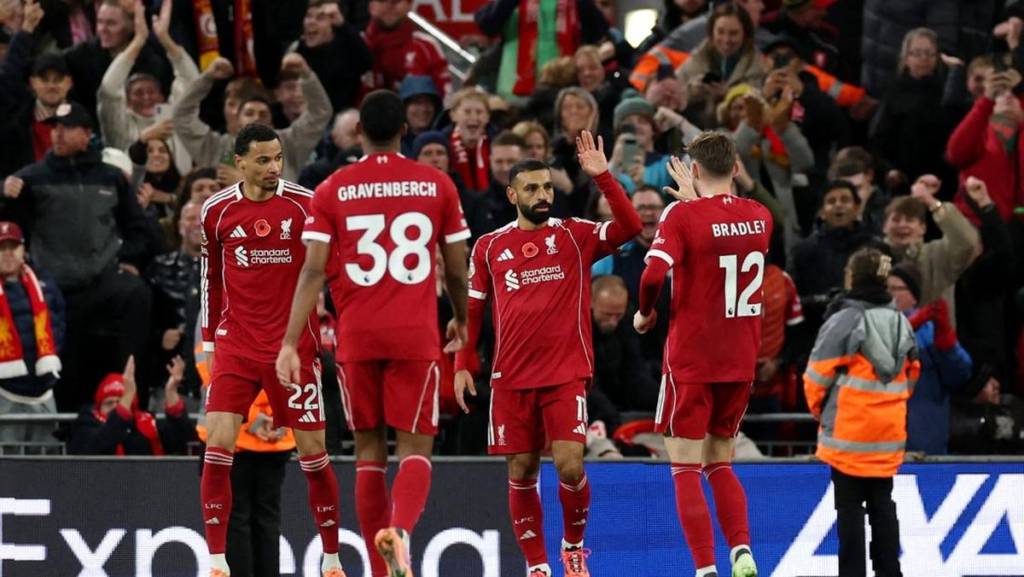Liverpool’s Premier League title defence is already in dangerous territory. Eleven games into the 2025–26 campaign, the reigning champions have suffered five defeats, a collapse that few could have predicted at the start of the season. The question now is whether they can stop the slide before the damage becomes irreversible.
Back in August, the mood around Anfield was one of confidence mixed with apprehension among rivals. After powering to the title last season and adding top European talent during the summer, many expected Liverpool to dominate again. Their perfect opening run of five league wins, including a composed victory in the Merseyside derby, suggested that another powerful campaign was underway.
Two months later, everything looks different. Liverpool have fallen to eighth place and have earned only three points from their last six Premier League matches. The speed of the decline has shocked supporters and analysts. Even in their early victories Liverpool did not play at full fluency, but very few expected such a dramatic collapse.
It would be impossible to overlook the emotional weight hanging over the club after the tragic passing of Diogo Jota in July. His death deeply affected those who worked and played alongside him. Andy Robertson recently revealed how heavily the loss continues to weigh on him. Speaking after Scotland’s qualification win over Denmark he confessed that he could not stop thinking about his friend. If the grief is that intense while on international duty it is even more powerful inside the Liverpool dressing room.
The 3 – 0 defeat at Manchester City before the international break intensified doubts about where this season is heading. Liverpool were denied a crucial equaliser when Virgil van Dijk’s goal was incorrectly ruled out. The Key Match Incidents panel later confirmed it should have stood. While Manchester City still deserved their win, that moment might have changed the rhythm of the game. The loss also came shortly after strong performances against Aston Villa and Real Madrid which highlights the inconsistency that keeps undermining Liverpool.
This difficult run has been shaped partly by the fixture list. Among their eleven league opponents so far only Burnley sit in the bottom six. Liverpool have already faced most of the Premier League’s leading sides. A heavy schedule does not fully explain the frustration however. Five defeats in eleven games is a crisis by modern standards especially for a team that lost only four league games in the previous campaign.
A more forgiving stretch now approaches. Nottingham Forest, who are second from bottom, will visit Anfield next. Four of Liverpool’s next five opponents sit in the lower half of the table. If the champions are going to spark a revival this period must ignite it.
Manager Arne Slot faces major tactical challenges. Many believed a return to last season’s trusted midfield of Gravenberch Mac Allister and Szoboszlai would stabilise performances. Although that trio played well against Villa and Real Madrid they also started several of Liverpool’s league defeats. Simply returning to last season’s blueprint has not solved the problems.
Liverpool’s possession dominance is another double edged factor. Opponents are choosing to defend deep or hit long balls and then allow Liverpool to carry the ball for long stretches. Liverpool average more than 60 percent possession per match and no team has spent a higher percentage of minutes trying to break down medium or low defensive blocks.
This was one of the reasons the club invested so heavily in Florian Wirtz. His creativity was expected to help Liverpool break compact defensive shapes. He has performed well in the Champions League but his influence in the Premier League has been limited. He produces far fewer chances in domestic play than in Europe which suggests he is still adjusting to the pace and physical demands of the league.
Alexander Isak, another expensive summer signing, is close to returning from injury. His finishing ability could significantly lift Liverpool’s efficiency in front of goal. The team’s current non penalty shot conversion rate is barely above 15 percent while Isak converted more than 26 percent of such shots last season. His competition for a starting place will be intense because Hugo Ekitike has become Liverpool’s leading scorer so far and one of the few bright spots in a turbulent season.
Despite Ekitike’s emergence Liverpool’s attack has regressed sharply. They averaged more than two goals per match on their way to the title last season but that figure has dropped to less than two this season. The team continues to create chances but they are finishing far fewer of them. Defensively Liverpool also appear fragile. They have conceded seventeen league goals and only a handful of teams have allowed more big chances against.
Perhaps the most telling problem is Liverpool’s inability to control game states. They have conceded the first goal in most of their recent matches and have lost every league game in which they have fallen behind. Last season they held the lead for the longest period of any Premier League team. This season they are among the lowest in minutes spent ahead and have already spent almost as much time losing as they did across the entire previous campaign.
There is still a small reason for hope. Last season Liverpool also experienced a mid season drop in performance but their underlying numbers improved sharply after a similar point in the calendar. Arne Slot will hope that pattern repeats.
But time is running short. Liverpool must restore their identity with urgency. The league is more competitive than ever and opponents have adapted quickly to expose their weaknesses. Whatever ambitions the club still holds begin with fixing the present.
Liverpool must show again why they were feared when the season began.
Should we send you latest update about your favourite sports and team?
Enter you email in the box below and hit the subscribe button to join our teaming 876+ sports community.
